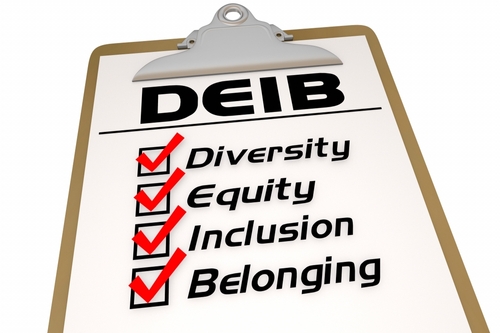While some companies continue to make progress in prioritizing DEI, others have cut budgets and laid off DEI leaders who were hired in waves after George Floyd’s murder in 2020. Workplace DEI efforts continue to become part of national political debates, including new anti-DEI policies that constrain companies’ abilities to move the needle forward in the field.
Still, research consistently shows that diverse companies are not only more innovative and profitable, but also attract top talent and retain them longer. Furthermore, for a majority of employed U.S. adults (56%), focusing on increasing DEI at work is a good thing, according to a new Pew Research Center survey.
For companies who are going against the tide and looking to strengthen their commitment to diversity and inclusion through their DEI efforts, we recently tapped Julie Fink, Vice President of Human Resources at the University of Phoenix, and Amanda Hahn, Chief Marketing Officer at HireVue, to gauge their insights about what it takes to create and sustain an effective DEI and belonging program.
Here’s what they had to say.
In what areas do employers make mistakes when beefing up their DEI programming?
JF: The first is to think that DEI is just about the numbers and the typical race/ethnicity categories. When you hire someone, you hire the entire person, not just their output. You cannot think that a person is just an employee, and worse yet, a commodity producing widgets. Every person is an individual and made up of a variety of elements and you need to ensure your policies, practices, and more importantly your actual practices, speak to this.
Second is to tie bonus or incentives to DEI metrics. This can drive compliance rather than commitment and possibly not the best decision for the business. We need to make the expected behavior clear, then reward or showcase that behavior. Set the example and shout it from the rooftops.
Third is not measuring and evaluating the effectiveness of your programs. DEI programs are just words on a page unless you understand if what you’re trying to do is working. DEI programs should be considered iterative, and changes made as needed.
Finally, and in my opinion, the most critical mistake is not including the element of Belonging. Belonging is how employees feel about their company, their boss, their leadership, their peers, whether their organization cares for them as individuals. If employees feel they belong, they feel ‘safe’ and more connected to the work and the organization. Talk to and listen to your employees about not only what they say but what they don’t say in this area. Do they feel comfortable and safe to speak up in areas that can be improved, or do they bring forth suggestions or recommendations?
DEI and Belonging are extremely important to talent both internally and externally. Employees, even existing employees, can work just about anywhere. Employees are looking at what their company is doing, or not doing. More and more candidates are doing their research in this area. They look beyond the canned verbiage on your website (we are an equal opportunity employer, et cetera) and look at your LinkedIn posts, social media, Glass Door reviews, and more. They look for what employees are saying, and what is the company doing in the community.
When it comes to recruiting and hiring, what should companies focus on as it relates to DEI?
AH: Stop focusing too much on experience and education requirements. Faced with ongoing labor shortages, many employers are exploring alternatives to their traditional hiring habits. Our 2023 Global Trends Report found that nearly half (48%) of the leaders surveyed are adopting a skills-first approach to talent acquisition, forgoing educational and past work experience unless they’re actually relevant to the job at hand. In doing so, they’re widening their overall talent pool, increasing the number of qualified candidates they attract and charting advancement paths for employees based on less biased or fairer, objective data.
It’s also important to include validated technology in your hiring strategy. From AI to automation to robotic assistance, technology is transforming the modern workplace. It streamlines the most complex workflows and processes and takes on repetitive and time-consuming tasks. And it allows people to communicate, no matter where they are in the world. There’s a misconception that technology is replacing human roles. Instead, it’s fulfilling mindless work, boosting employee productivity, and allowing talent teams to focus on the most impactful parts of their job. Our report found that in the past year alone, two in three talent teams have implemented video or virtual interviews to boost hiring productivity. When asked what benefits talent teams saw from these changes in interviewing, respondents reported time savings, greater flexibility, and a bigger pool of diverse talent.
In today’s world of continued uncertainty, the most successful hiring teams are the ones taking an agile hiring approach that focuses on skills and potential vs. just experience. Hiring teams need to be adaptable and quick. This means acting efficiently, connecting with candidates authentically, and being open to unconventional hiring practices that align with their goals. Make sure that you are:
- Prioritizing skills: adopting a skills-first approach to talent acquisition, rather than focusing entirely on education and experience.
- Implementing hiring technology: taking full advantage of technology so employees can focus on work that is less tedious and more fulfilling.
In a time when employers are struggling to find quality candidates, fostering a diverse workforce will only benefit them. Especially since 50% of candidates want to work for companies with a proven DEI track record and strong DEI initiatives, according to our report.

